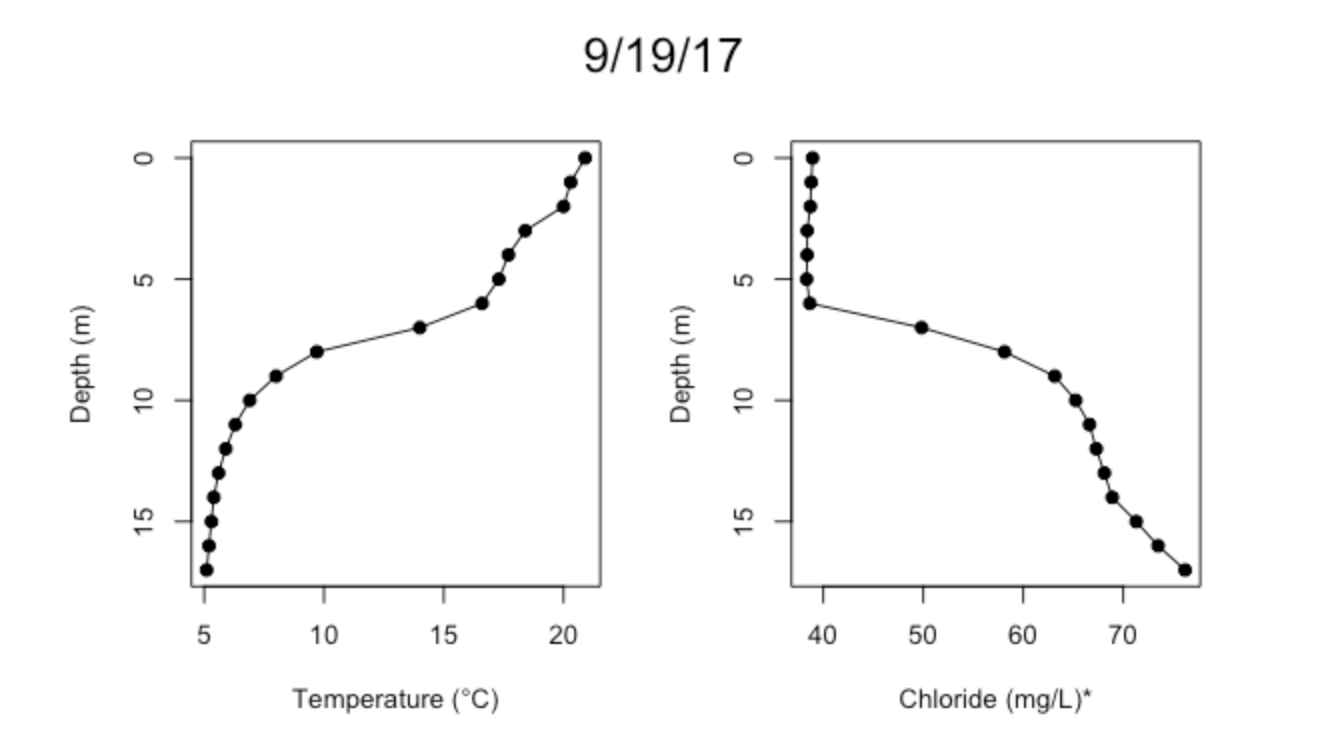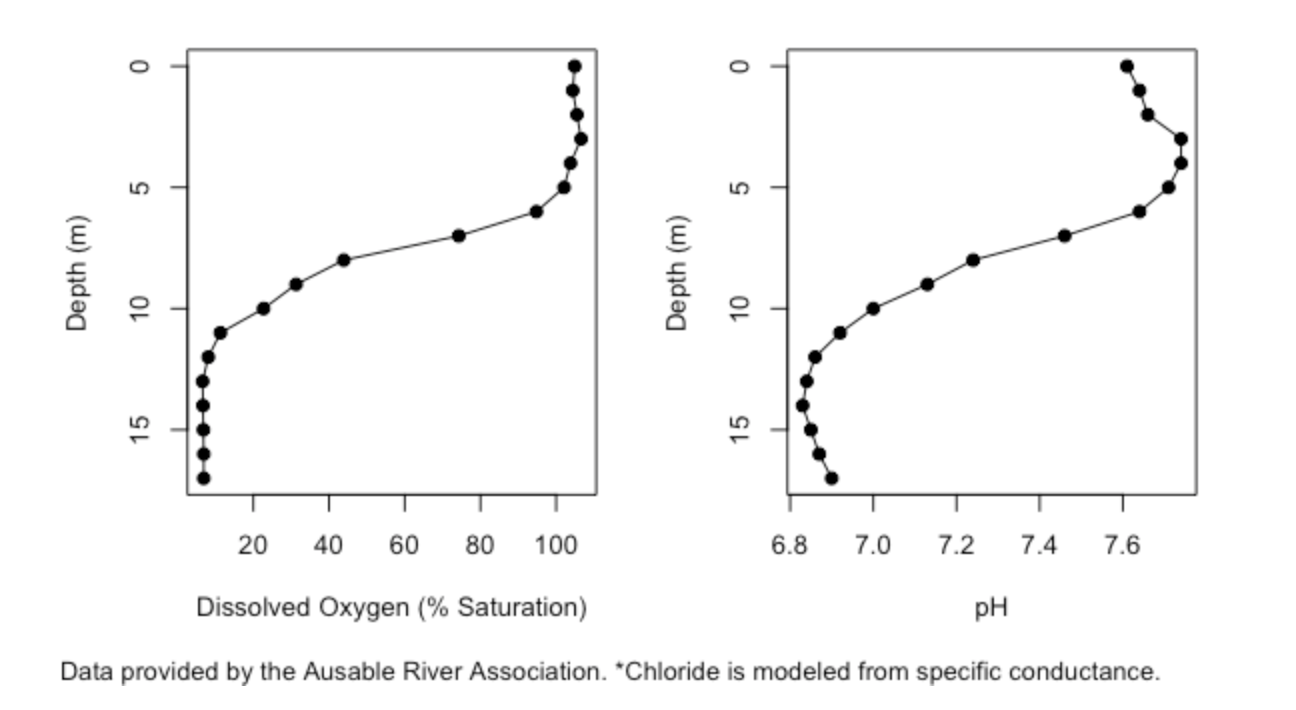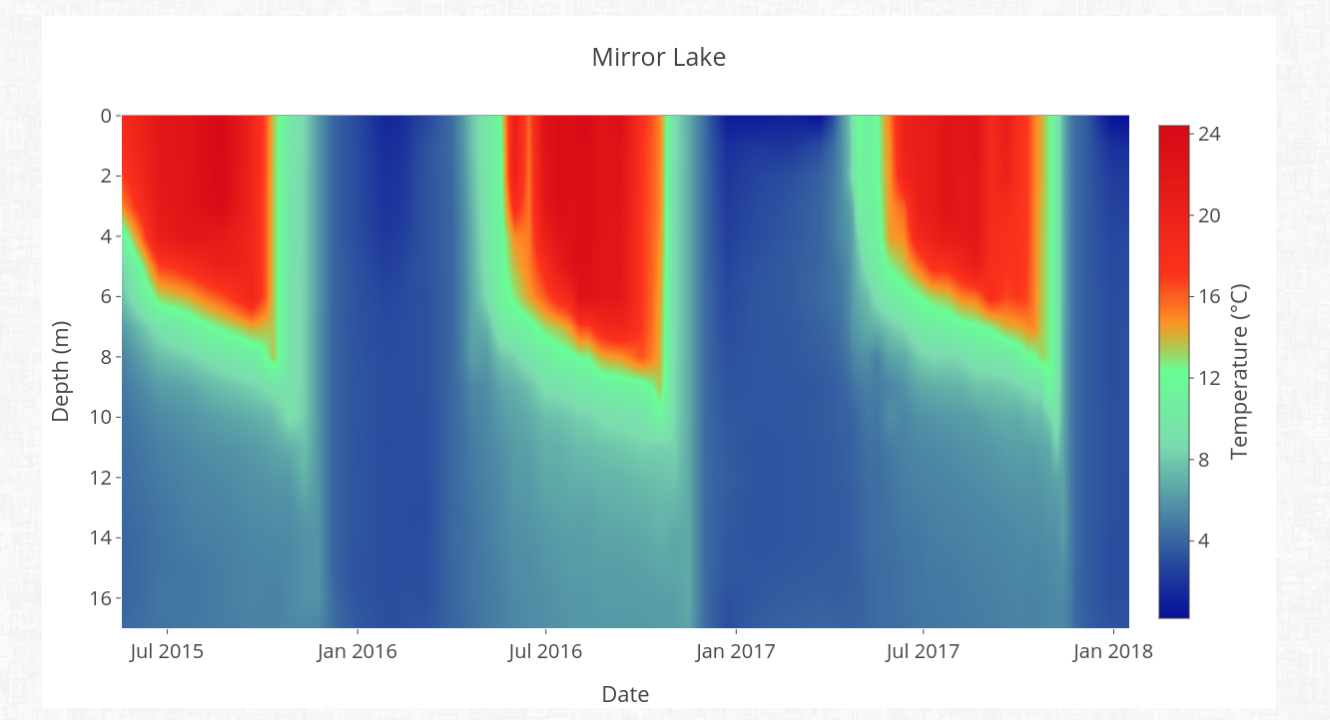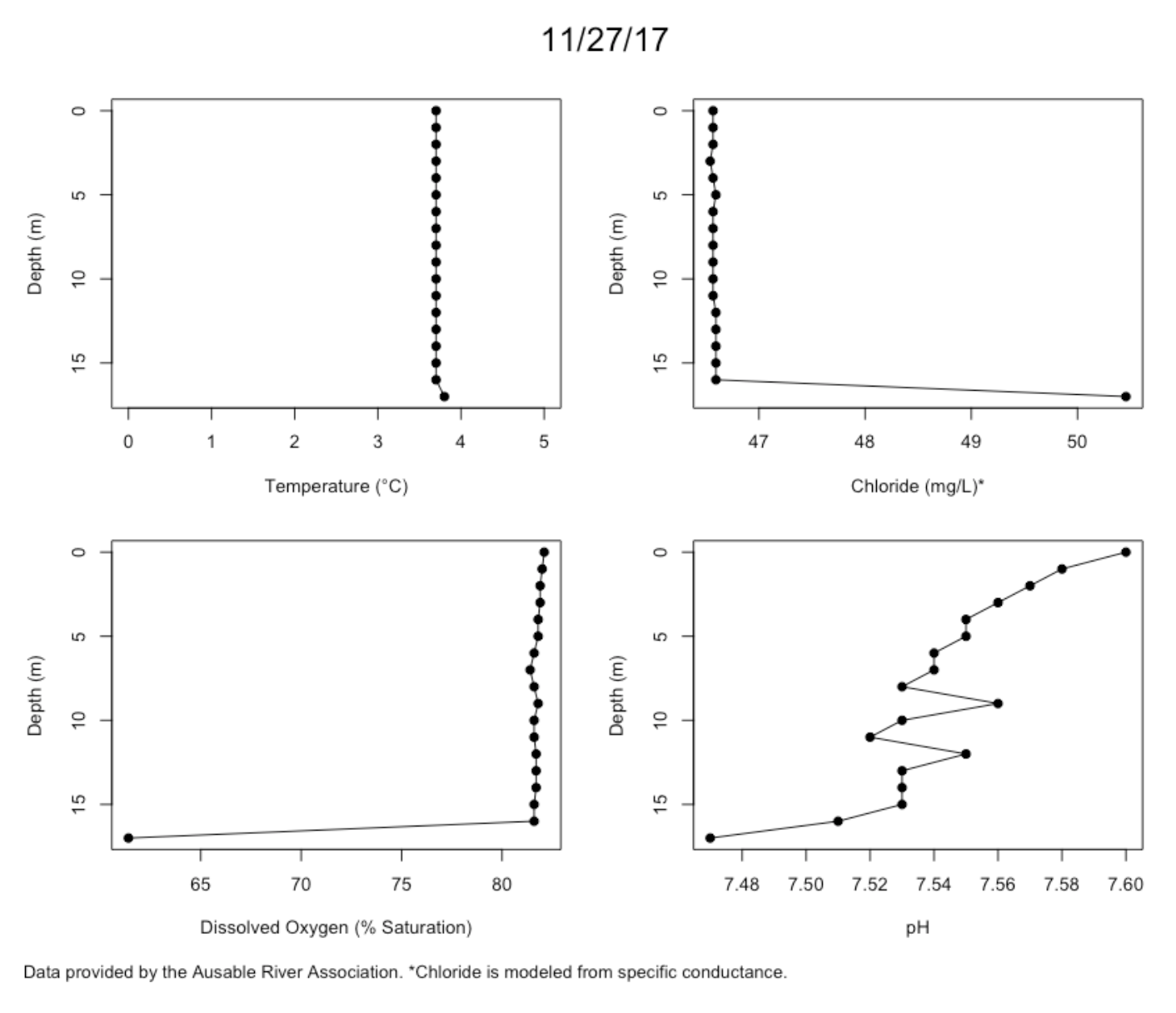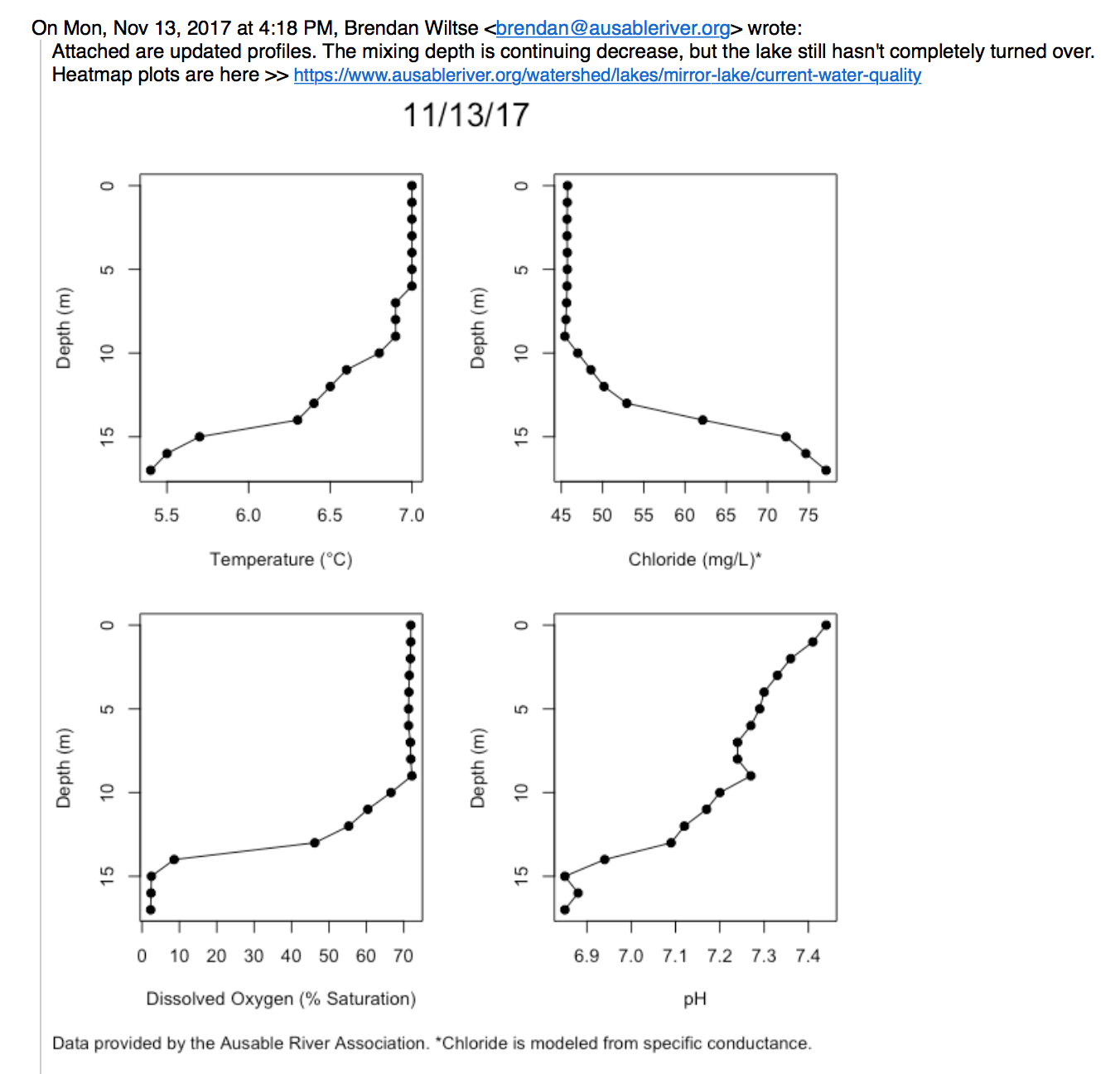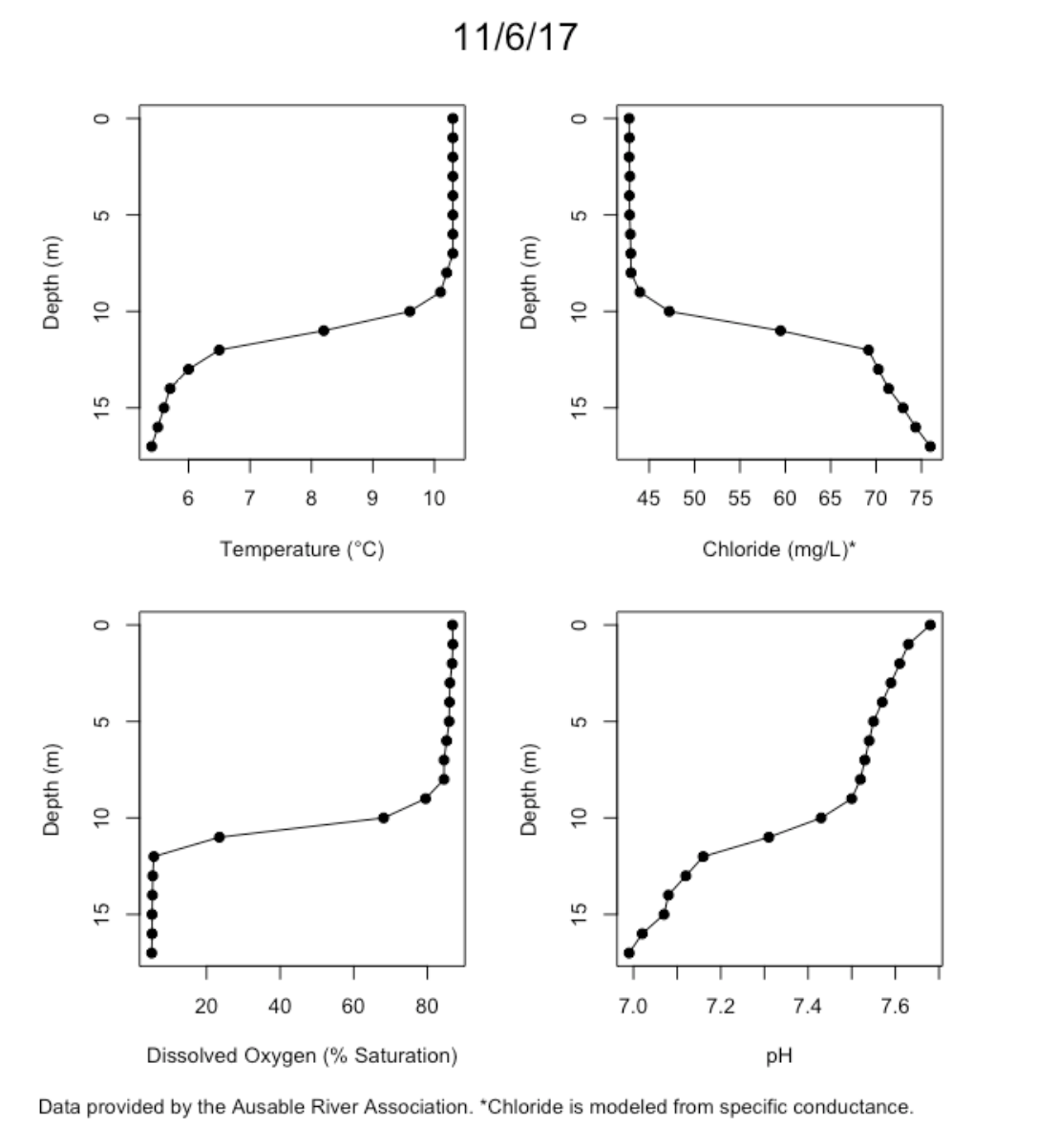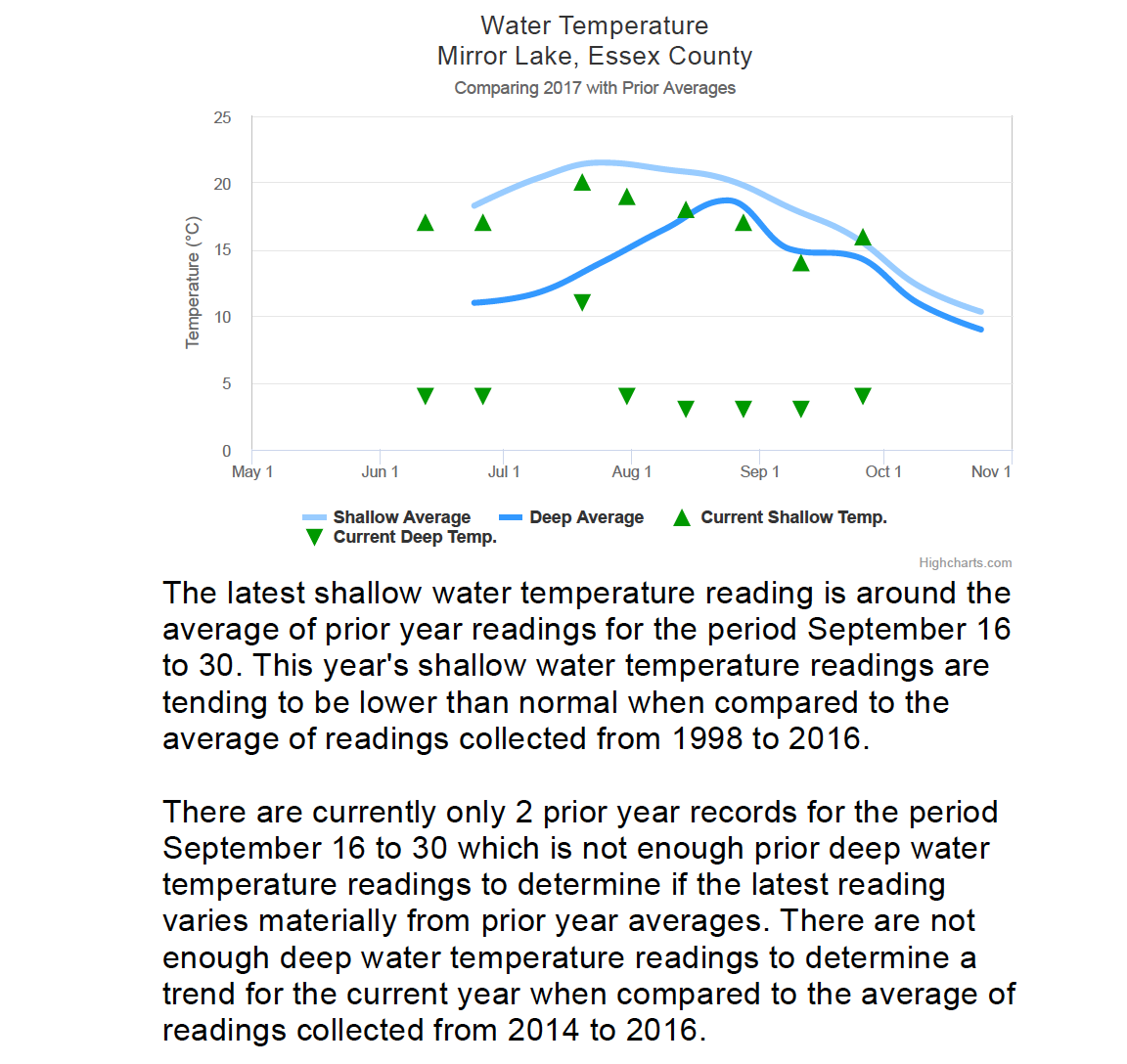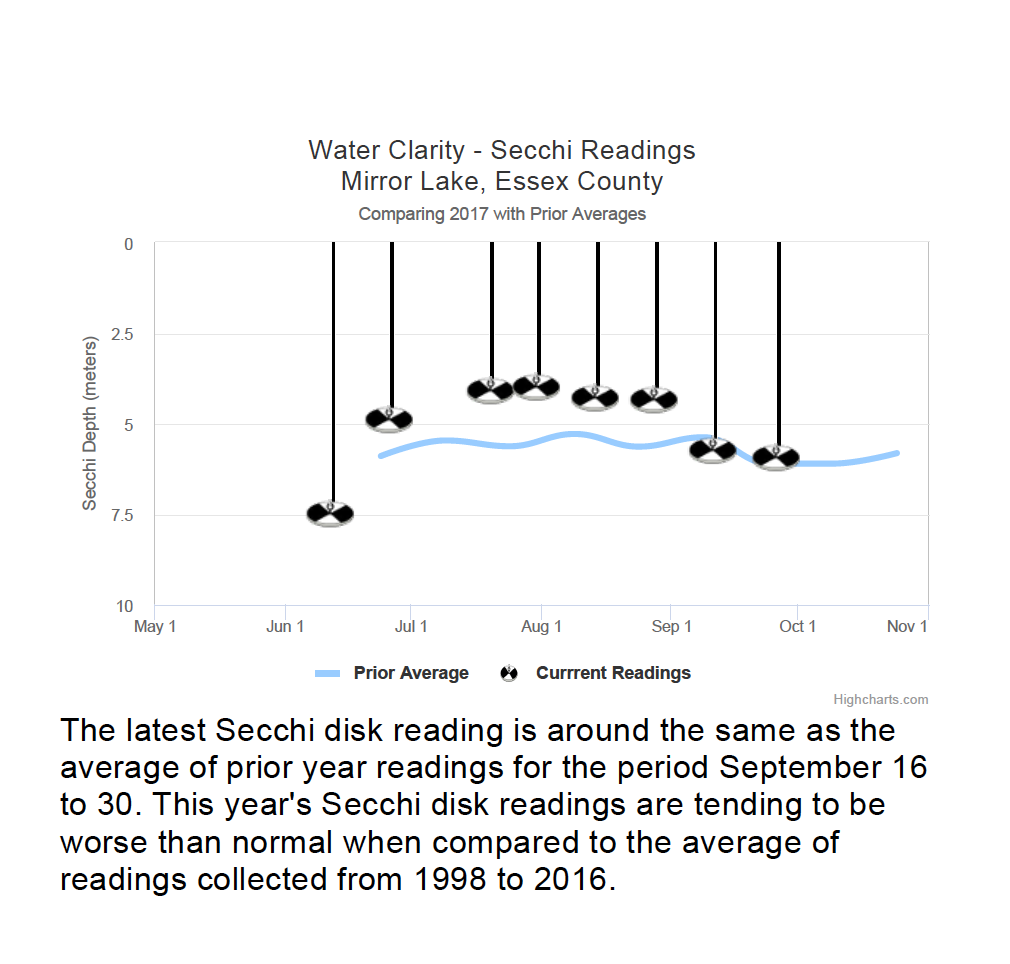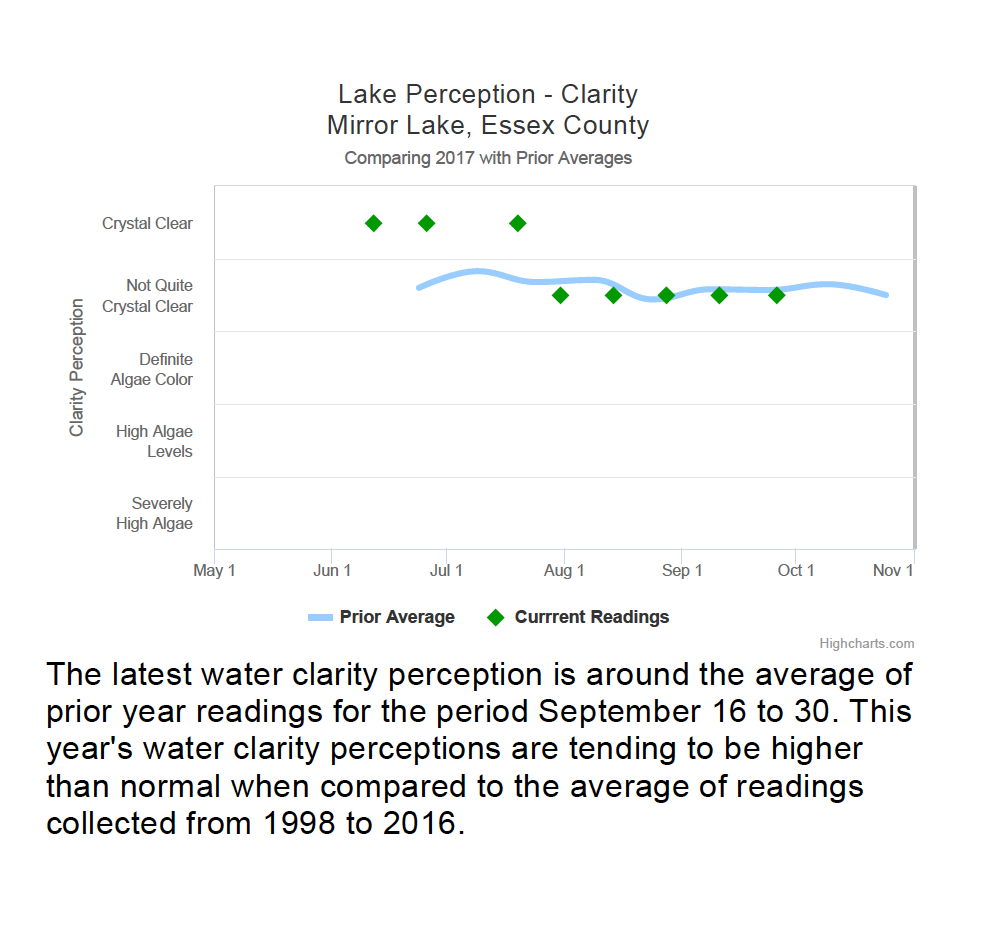
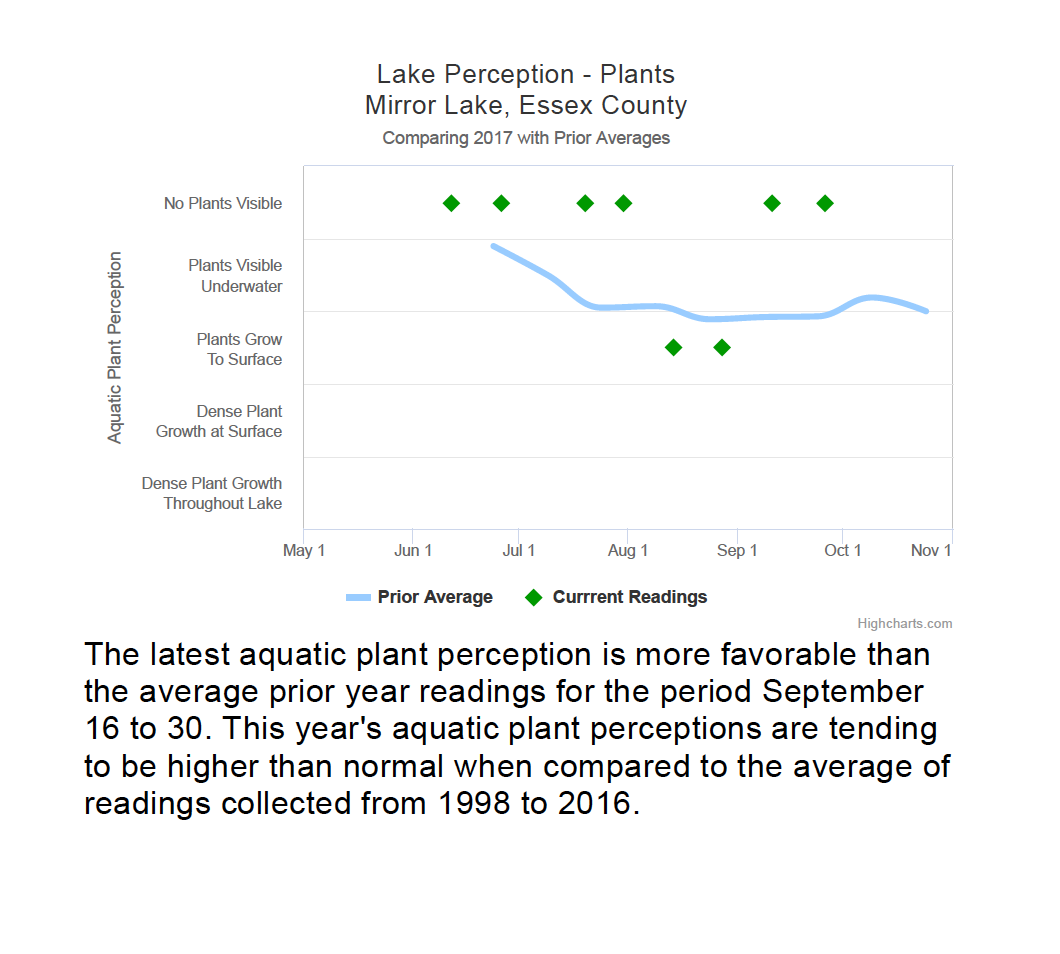
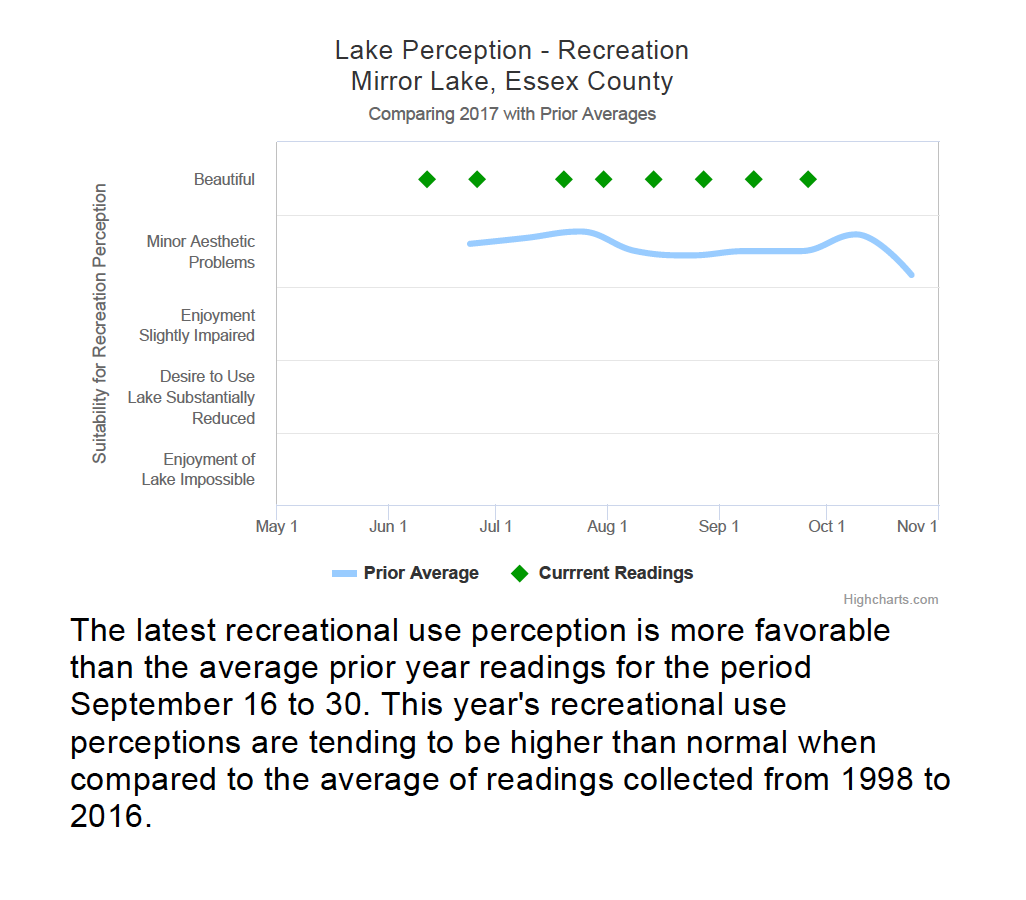
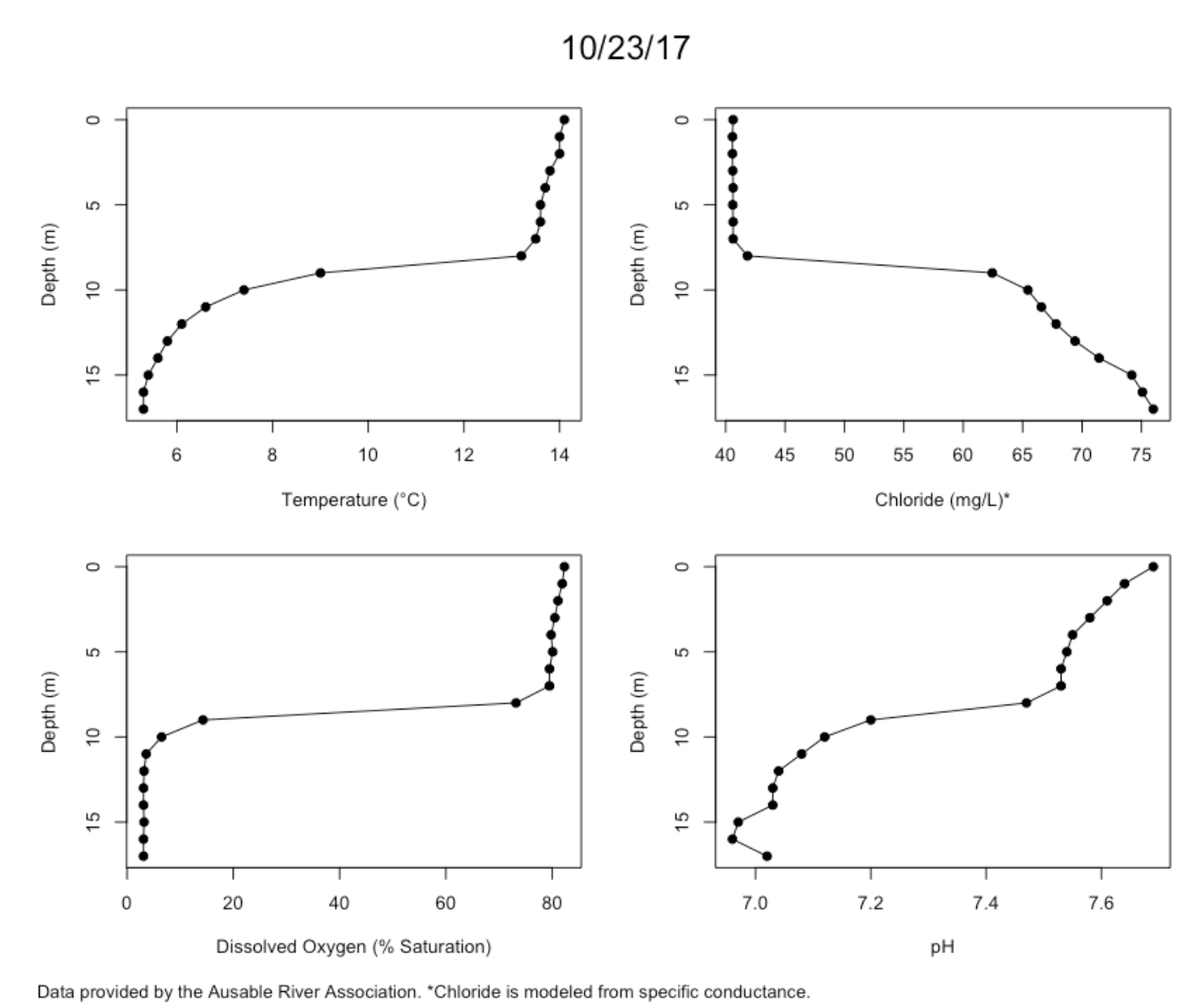
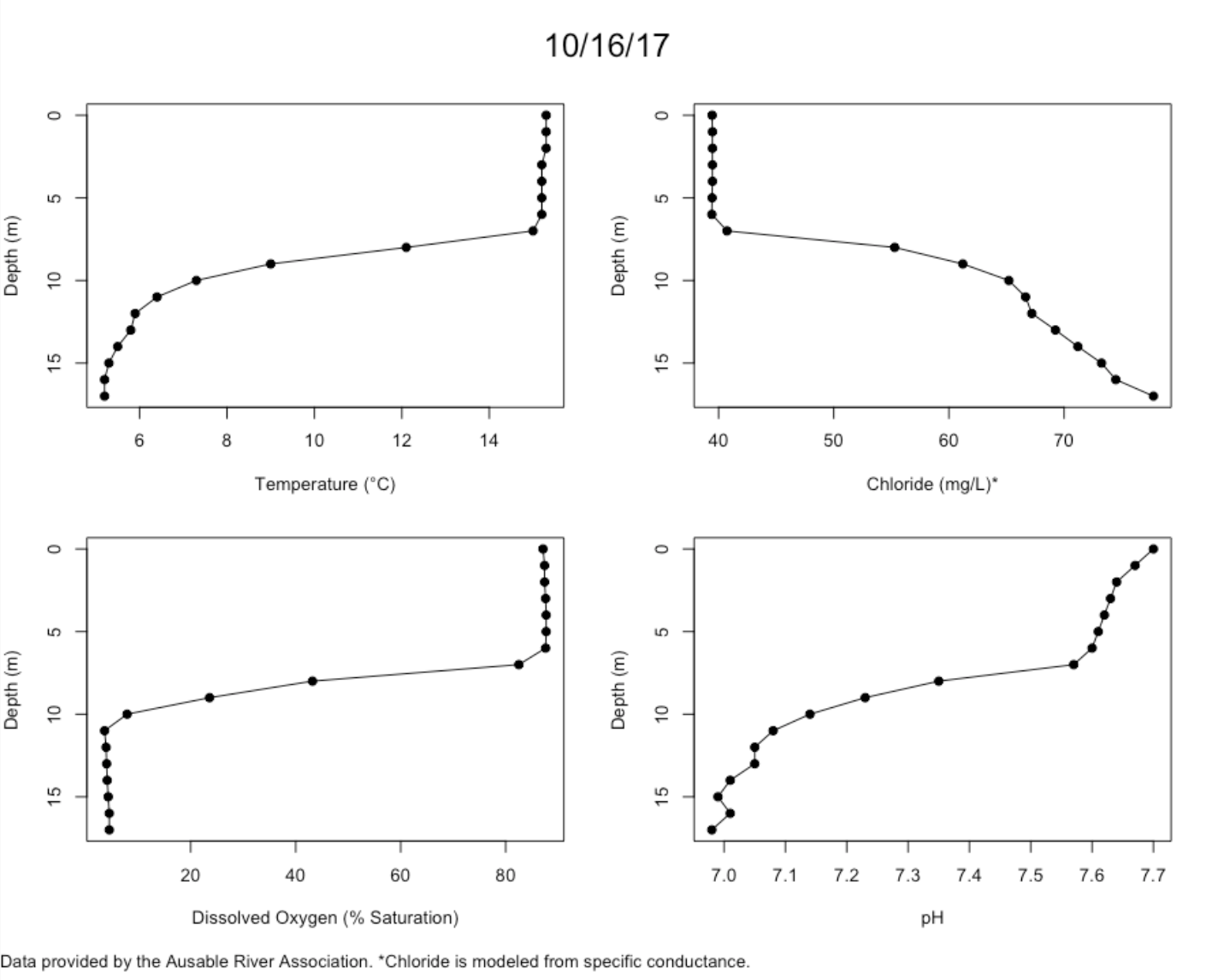
Profiles from today are attached. The lake is cooling down but remains stratified. The portion of the lake that is hypoxic continues to expand and will likely continue to do so until turnover occurs. The buildup of chloride at the lake bottom persists.
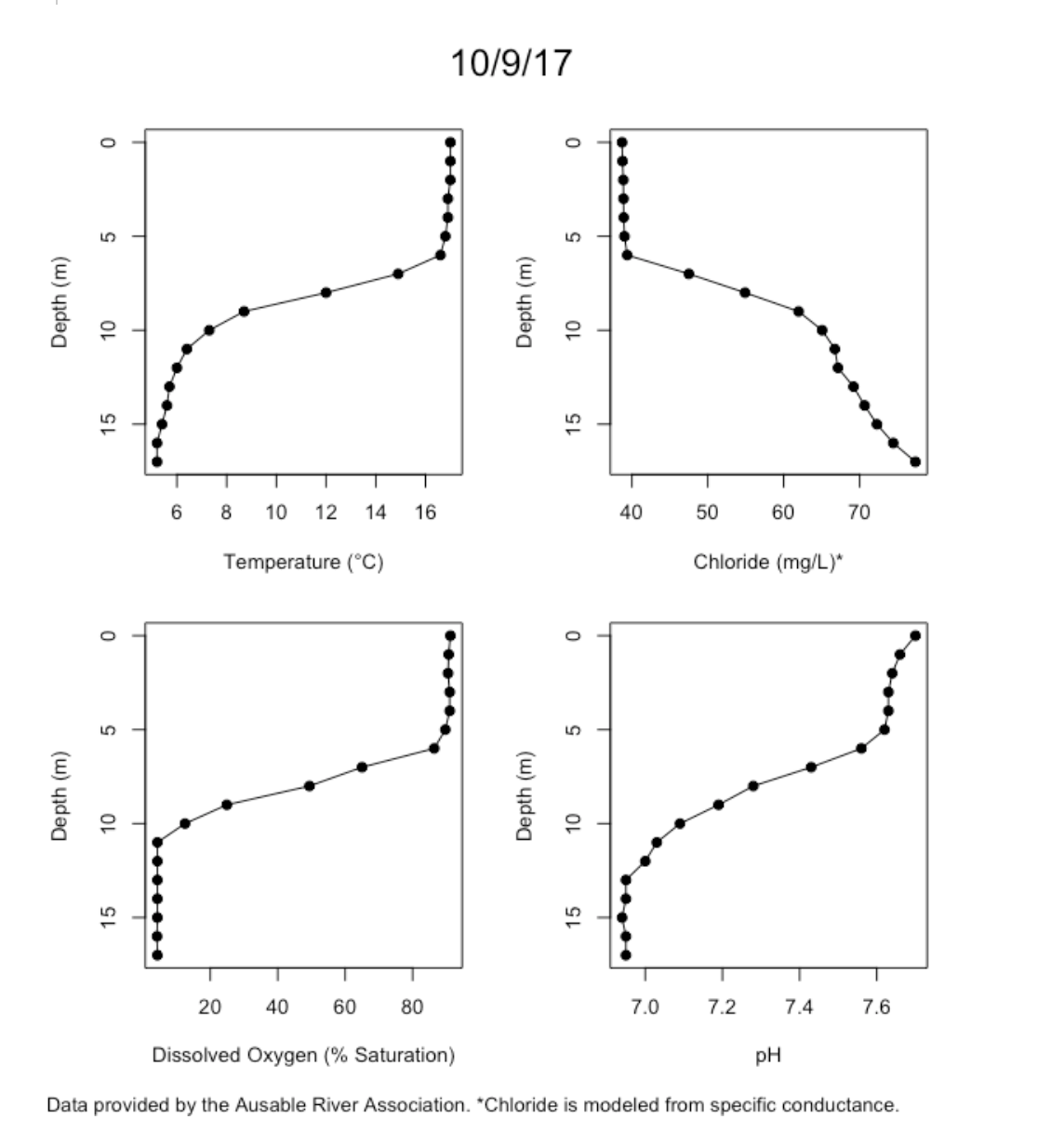
For information regarding the leak into Mirror lake go to ARsA by clicking here
—————————————————————————
9/27/17
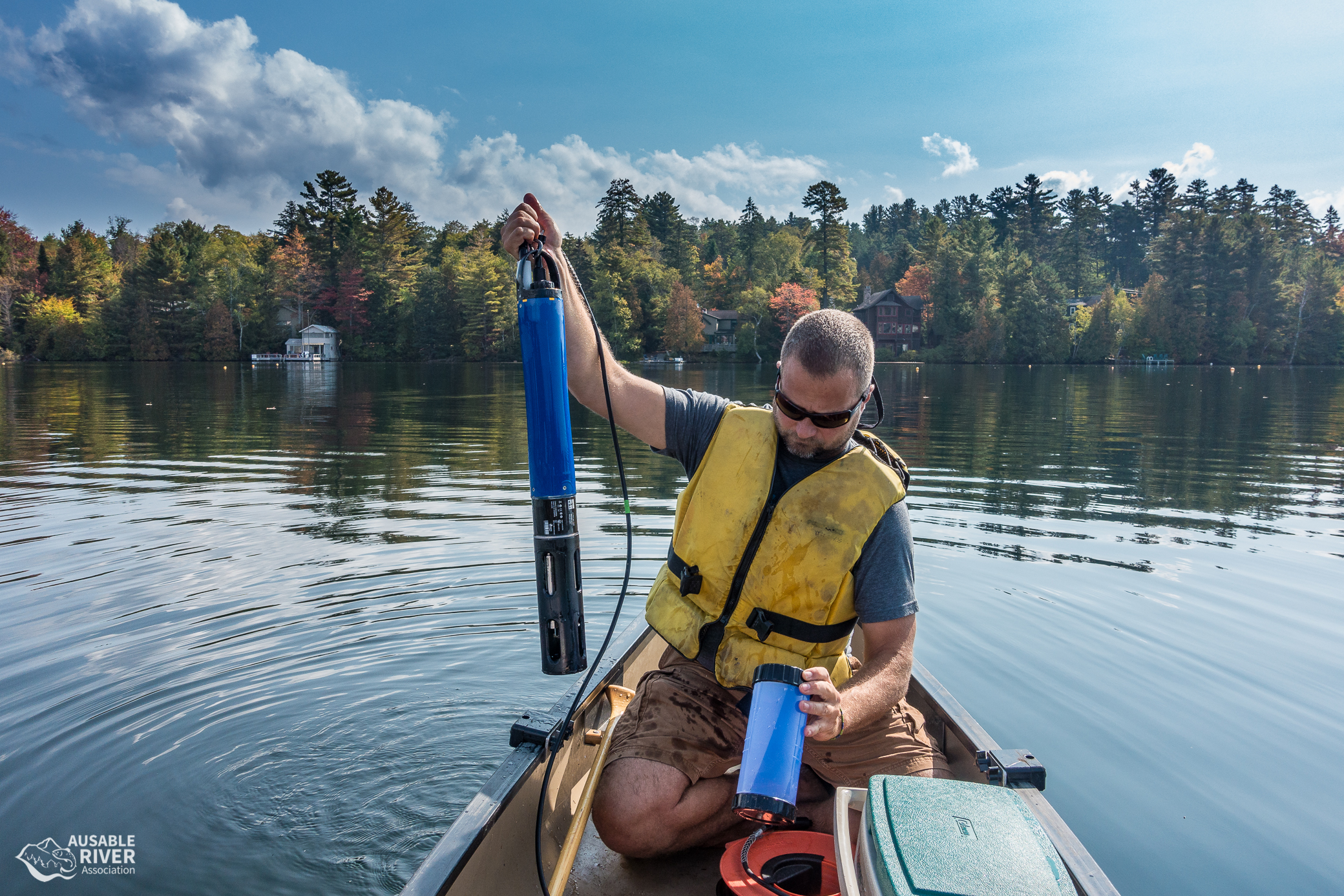
These two photos are of Corey with the EXO 2 sonde we deployed on Mirror Lake last week. Corey was also out on Lake Placid Monday and Tuesday with his limnology students collecting profiles with this sonde and collecting water samples.
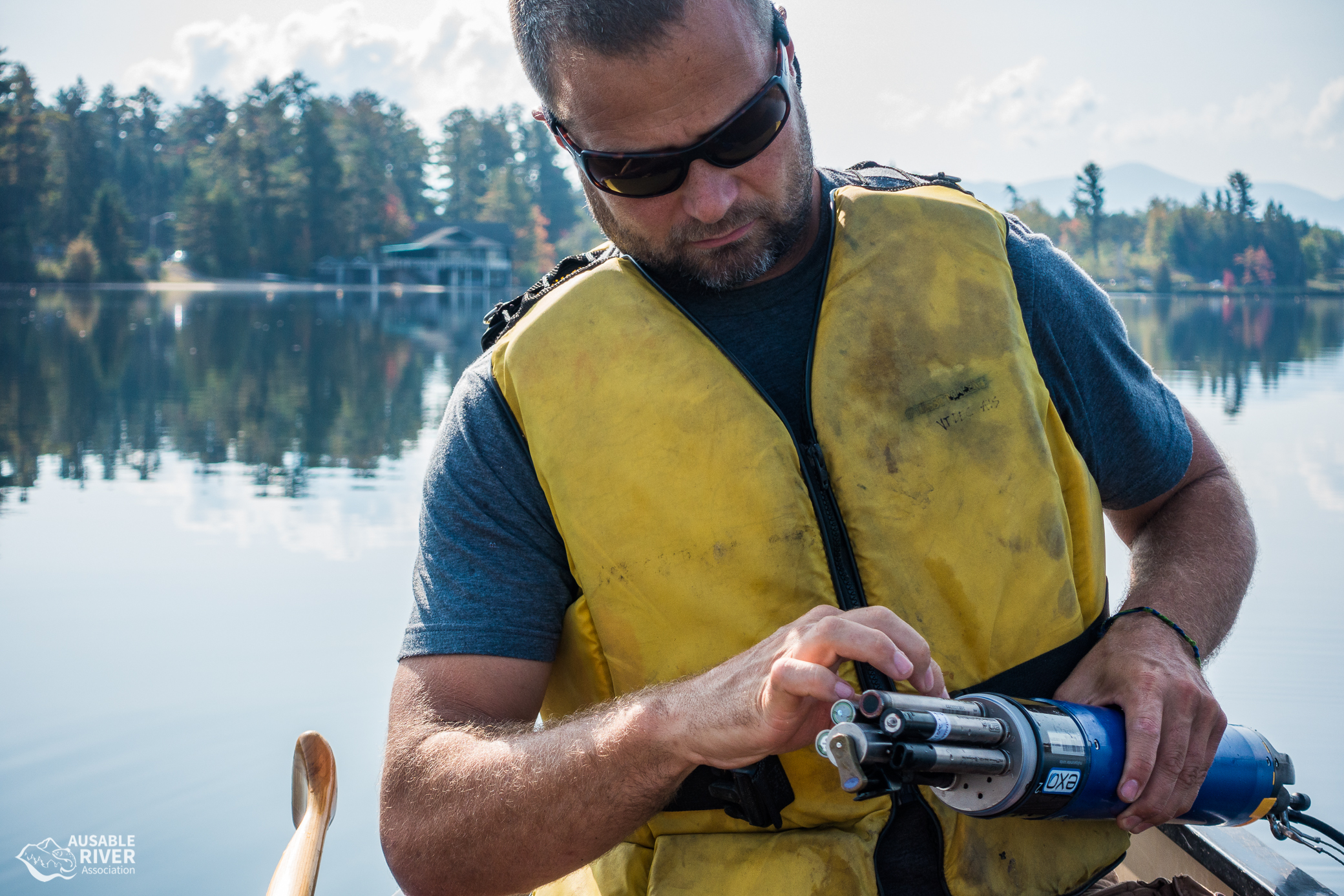
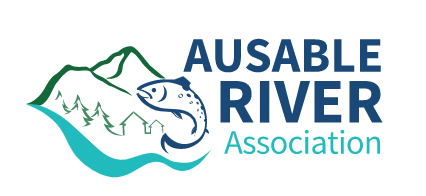
Below are heatmap plots showing temperature, dissolved oxygen, and chloride data through our most recent sampling visit. AsRA staff sample Mirror Lake on a bi-weekly basis during the open water season and monthly during the winter. Annually we published a detailed report on the water quality of Mirror Lake. This work is done in close partnership with the Adirondack Watershed Institute.
How to read the plots below: The plots below depict changes in the measured parameter over both space (through the water column) and time. The x-axis is time, looking across the plot from left to right gives a sense of how the lake has changed over time. The y-axis is depth in the water column, the top of the plot is the surface of the lake and the bottom of the plot is the bottom of the lake. The colors inside the plot represent the values for the parameter being plotted, a key is on the right side of the plot.
Mirror Lake Temperature
The surface water temperature in 2017 has been cooler than both 2015 and 2016. Additionally, the thermocline has been shallower and the hypolimnion larger.

Mirror Lake Dissolved Oxygen
Mirror Lake has experienced hypoxic conditions (<2 mg/L) at the lake bottom in 2015, 2016, and 2017. In 2017 the size and duration of the hypoxic zone is both larger and longer than in 2015 or 2016. Understanding the extent, duration, and cause of hypoxia is important to maintaining the health of many aquatic organisms, including fish.

Mirror Lake Chloride
Road salt is one of the major threats to Mirror Lake. Stormwater directly enters the lake from over 30 outfalls around the shore. When this salt laden runoff enters the lake it settles to the bottom. This can be observed during both the winters of 2015-16 and 2016-17. That build up of salt persists through the summer if the lake does not turnover in the spring, this phenomenon occurred this year and we expect it also occurred in 2015. The lack of turnover exacerbates the hypoxic conditions mentioned above, threatening the fish and other organisms living in the lake. We are currently working on studying this phenomenon to understand whether the lack of spring turnover is natural for Mirror Lake or the result of the buildup of saltier water at the lake bottom.

Funding for this work is provided by the New York State Department of State, Village of Lake Placid, Town of North Elba, IRONMAN Foundation, and Mirror Lake Watershed Association. For more information on our work on Mirror Lake email Brendan Wiltse, brendan@ausableriver.org.
THE LATEST NEWS OF THE CHEMISTRY OF MIRROR LAKE
In this report from Brendan are attached profiles from 9/19/17. Corey and I collected water samples at 1m intervals throughout the water column. We will use the chemistry analysis from these samples to compare to another set taken after ice on. This will allow us to understand the fall turnover better and compare it to a similar set of samples collected at the end of winter and after stratification is established.
We also brought out the YSI EXO 2 sonde which is the sensor used in the Upper Saranac Lake environmental monitoring platform. This gives us fluorescence data which can be used to measure phytoplankton production.
Thermal stratification is starting to break down in the upper part of the water column, but not enough to impact the chloride gradient lower down.
